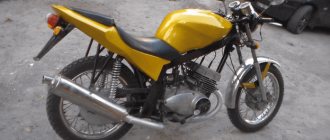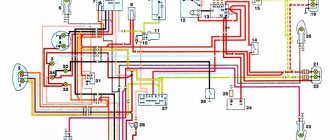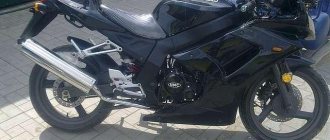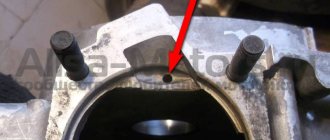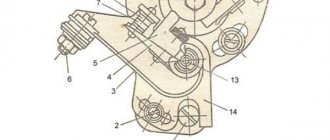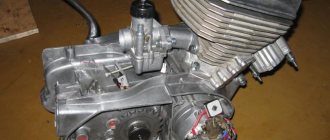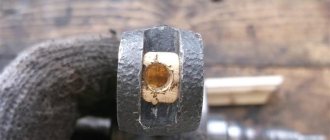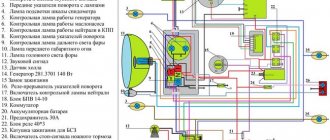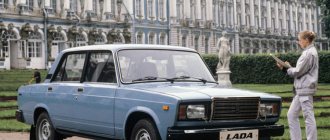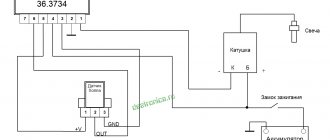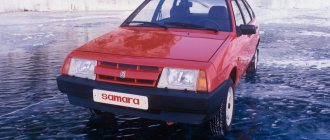Background of IZh motorcycles
The entire family of IZh motorcycles traces its ancestry directly to the pre-war German model of the DKW company - NZ-350. During the Great Patriotic War, this reliable equipment became one of the main types of Wehrmacht motorcycles in the off-road conditions of the Eastern Front. In 1944, one of the DKW factories in the city of Zschopau found itself in the zone of occupation by Soviet troops. As reparation, equipment, technical documentation and specialists were exported from Germany. After the end of hostilities, the USSR government decided to begin production of Soviet motorcycles at the Izhevsk plant, which had previously produced weapons. So in Udmurtia they began to make copies of German motorcycles under the IZh brand. And these motorcycles are not inferior to their German “parents”. IZH Planet 3, as well as its modifications, as well as the following models 4 and 5, are in constant demand.
Engine Izh Planet Sport
As you know, the Izhmash plant also produced other models of the planet, but at that time they all had weak characteristics. Planet Sport became the most powerful planet at that time, receiving 349 cm3. volume and 32 horses. The only part taken from foreigners was the Mikuni carburetor, which belonged to Japanese engineers. Soon they took more electrical equipment and optics from them. As a result, with such strong characteristics and a weight of 135 kg, the planet received 237 hp. per 1 ton of weight. The result was excellent dynamic performance - the motorcycle reached 100 km/h in just 11 seconds. Soon the new modifications were significantly changed; the manufacturer decided to abandon imported elements and installed a Soviet speedometer and electrical equipment. There was also a modification with a K-62M carburetor of our own production, but with it the motorcycle produced only 28 hp.
Motorcycle Izh Planet Sport
Welcome! The Izh Planet Sport motorcycle is an excellent choice and an interesting topic to study. Every guest of “All about Moto” can find out many details about him. This road bike deserves special attention and is rightfully considered a motorcycle legend of the USSR. In addition, explore information about biker clubs and many unusual motorcycles thanks to our website!
About the legendary Sports from the USSR
This iron horse is the pride of the domestic motorcycle industry. As a mid-class sports motorcycle, it was produced from 1973 to 1984. This two-wheeled vehicle was the Soviet motorcycle industry’s response to the production of the super-popular Czechoslovak “Java”. Long before 1973, Izhmash designers tried to produce a high-quality bike to compete with the latter. The Izh Planet Sport motorcycle, whose technical characteristics overwhelmed all competitors, had several purposes. It was good for both tourist and sports trips. Moreover, it was possible to ride on such a motorcycle on roads with a variety of surfaces. Riding brought a lot of pleasure to both the driver of the bike and his passenger.
The employees of the Izhevsk Motor Plant put their souls into this iron horse. In the list of the most memorable two-wheelers of domestic production, this equipment confidently holds the first position.
At the beginning of 1973, many compatriots, who doted on iron horses, were shocked by the release of the first serial sports bike of the USSR. The Izh Planet Sport motorcycle's technical characteristics were far ahead of any domestic steel horse.
The bike was unlike its Soviet counterparts both externally and structurally. Izh PS is reminiscent of Japanese motorcycles from the 1960s. For example, similarities were noticed with the Suzuki “T250” Super Six, as well as the Yamaha “350R5”. The bike also resembles the Kawasaki “A1” Samurai. This is not the first time that Izha has been compared to Japanese motorcycles. So, don’t get used to it...
The Izh Planet Sport motorcycle was bought in the UK, the Netherlands and even Finland. In foreign markets, IZH PS actively competed with Java with CZ bikes. The first model of the above equipment cost about 1,050 rubles. Then this iron horse became slightly cheaper (by 50 rubles).
Made in USSR + Japan
It is interesting that all the main components and assemblies were domestic (except perhaps for the Japanese carburetor), that is, our own technologies made it possible to implement any modern designs - and to do this in mass production and with the expectation of long-term operation. Which, in fact, is not surprising, because IzhMash at that time was a defense complex enterprise. Only minor components of IZH PS were purchased abroad - lighting equipment and electrical appliances.
The Avtoexport advertising poster shows an experimental motorcycle; it was distinguished by its engine and cladding parts.
Imported parts provided the new product with a marketable appearance: style, design, neatness of finishing - what we really had problems with. According to the recollections of IzhMash veterans, in the first year of production (1973 - 1974) 30 thousand sets of 12 units of components each were purchased from Japan.
In the second year, by the way, the Japanese raised the price 2.5 times, purchased spare parts again, but in the end this played a role and the later PeEs lost imported parts, losing not only the “foreign” finish, but also 4 liters. With. power.
Motorcycle maintenance and repair
In general, the design of the Izhevsk motorcycle has not changed since 1956 (then the first model IZH-56 “Planet” rolled off the assembly line), therefore spare parts and components are interchangeable with subsequent Planet models - 4 and 5. There will be some difficulties in adaptation, but not significant. IZH Planet 3 requires standard repairs, which are not anything complicated. The processes of installation and dismantling of the main units and components completely coincide with all models of motorcycles from the Izhevsk plant. If the engine has been broken in correctly, there will be very few problems with it. The literature on repairing IZH Planet 3 is numerous - this is in the case of the decision to “rummage around in the garage yourself.” Also today, due to the great popularity of this model, many services carry out motorcycle maintenance and other work.
Technical parameters of the motorcycle
IZH Planet 3 has an engine with a volume of 346 cm3, but can reach speeds of up to 110 km/h. The engine has a power of 18 horsepower at 5 thousand rpm. For a route of 100 kilometers, a motorcycle consumes about 5 liters of a mixture of oil and gasoline at a speed of 90 km/h. When driving at lower speeds, fuel consumption is significantly reduced; for example, at a speed of 60 km/h, about 3.7 liters will be consumed. The IE Planet 3 gas tank can hold 18 liters of gasoline. The equipment has 2 mufflers. The basic motorcycle weighed 168 kilograms; it can carry the same weight on itself. The front wheel has a telescopic fork, the rear wheel has a spring suspension. IZH Planet 3 is the first motorcycle in the USSR to be equipped with direction indicators.
Technical characteristics of "Izh Planet Sport"
Izh PS was produced in two modifications, which have some differences in the parameters of speed, weight, etc.
Factory characteristics of the 1975 Izh PS are as follows:
- base - 1390 mm;
- height - 1150 mm;
- length - 2070 mm;
- width - 790 mm;
- ground clearance - 135 mm.
- unloaded vehicle weight - 135 kg;
- maximum speed - 140 km/h;
- acceleration - 0...100 km/h in 11 seconds;
- motor power - 32 l/s;
- compression - 10-10.5.
The same parameters in the 1983 “Planet Sport” modification look like this:
- base - 1440 mm;
- height - 1150 mm;
- length - 2150 mm;
- width - 810 mm;
- ground clearance - 135 mm;
- unloaded vehicle weight - 155 kg;
- maximum speed - 135 km/h;
- acceleration - 0...100 km/h in 11 seconds;
- motor power - 28 l/s;
- compression - 8.7-9.2.
Otherwise, the 1975 Izh Planet Sport-350 is no different from the 1983 model:
- single-cylinder, two-stroke engine with three-channel scavenging;
- air cooling system;
- carburetor K-62M (“Mikuni”);
- lubrication system - together with fuel;
- Four-speed gearbox;
- multi-disc clutch system, in an oil bath;
- electrical system voltage - 12 V;
- tank capacity - 14 l;
- fuel - AI-93.
Latest changes in the history of Izh Planet Sport
1979 brought some, not the best, changes to the creation of motorcycles. Manufacturers sought to completely get rid of foreign parts and components that were of higher quality than domestically produced parts. The price of motorcycle spare parts has been reduced accordingly.
Already in April 1975, based on the so popular and beloved by people, Planet Sports, production of new models was launched:
- sports Izh M-15
- cross Izh-K-15
“Dog” - this is the nickname that Soviet motorcyclists awarded Planet Sport. It was popular and in demand for many years, due to which it was repeatedly subjected to engine tuning. The Dog cylinder was, as a rule, sharpened to fit a CheZet or M-412 Moskvich piston.
This was the way the Planet Sport 500 was born. It can be called a truly great work of art by Soviet tuning artists.
Story
| This section is missing references to information sources. Information must be verifiable, otherwise it may be questioned and deleted. You may edit this article to include links to authoritative sources. This mark was set on July 26, 2021 . |
In 1973, the Izhevsk plant produced the first serial sports motorcycle, the Izh Planet Sport. The motorcycle was very different from its other Izhevsk counterparts, both in appearance and in design. Externally, the Izh-PS was very similar to Japanese motorcycles of the mid-1960s (for example, the 1966 Suzuki T250 Super Six, the 1970 Yamaha 350R5, and the 1966 Kawasaki A1 Samurai). Thanks to the high technical level of design and workmanship, Izh Planet Sport was exported to many countries around the world. They were especially popular in the UK, the Netherlands and Finland, where they successfully competed with Javas and motorcycles [ source not specified 399 days
].
When production began, the motorcycle cost about 1,050 rubles; subsequent batches began to be sold for 1,000 rubles. The motorcycle remained on the assembly line until 1984, after which it was discontinued. Among Soviet motorcyclists, the most highly valued were the Izh PSs of the first years of production, which were expensive even at the age of ten.
Planet 3 tuning
Of course, many owners of IZH Planet 3 tune their motorcycle. But not everything that you want is useful. For example, boosting the engine leads to rapid wear and tear of the unit and inevitable repairs, since it is simply not designed for such power. But converting the power supply system from contact to non-contact, strengthening the frame, installing a sliding contact with the corresponding board are completely compatible with this technique. Although modern owners do not think twice, since IZH Planet 3 today is sometimes available for free. They boldly experiment. But the rare and reliable motorcycle still lives a full life. And it is in great demand among fans of metal motorcycles.
History of equipment features
1974
- The first option for mounting the engine is soft, with rubber dampers
- Special “fan” fins of the cylinder head
- Carburetor "Mikuni" AEX (Japan)
- Initially installed domestic direction indicators (from the base Planeta-3 and Izh Jupiter-3 motorcycles, distinguished by chrome plating)
- Muffler straight
- Air filter “Filtrak” A 105/153- 1500 TGLN 39-474 (GDR)
- Some motorcycles (mostly for export) had foreign-made tires “Barum” (Czechoslovakia) and “IRC” (Japan)
- A rear-view mirror with an end mount on the steering wheel (from the base Izhevsk Moskvich-408 car) by the end of the 70s was moved to the clutch lever mounting clamp
- Self-adhesive labels on tank and tool boxes
- Speedometer from the Pannonia motorcycle - T4 or T5 (Hungary), Veglia Borletti (Italy)
- The first domestic motorcycle generator with a network voltage of 12 volts (GP-1)
- Foreign electrical equipment and lighting equipment: Combined switches on the steering wheel from the Japanese motorcycle “Honda” CB350 and corresponding clutch and manual front brake levers
- Sound signal "Nikko" YPL 1400 (Japan)
- Rear light "Stanley" (Japan)
- The optical element of the headlight from the Pannonia motorcycle is T5 (Hungary), later the West German Hella 1A7 001.140.01. For countries with left-hand traffic -
- Ignition switch PAL (Czechoslovakia) from a Jawa motorcycle
- Spark plug “Magneti Marelli” CW8N (Italy)
- Reflectors on the front fork “Stanley” RR 30 SAE B67 (Japan)
- Foreign batteries (Japan)
1975
- Carburetor "Mikuni" VM32-89
- Combined handlebar switches and ignition switch (360-82508-42) from the Japanese Yamaha RD350 motorcycle and corresponding clutch and manual front brake levers
- New version of side reflectors and rear light "Stanley" (040-5469)
- The fastening of the guide lug (for the fork leg) of the front brake drum has been changed from rivet to solid cast
- The finning of the cylinder head changes to the usual “straight” one.
- At the end of the year, domestic direction indicators are replaced with Japanese “Stanley” 23040-037
- Domestic gasoline tap KR-12 with explanatory notes in English
1976
- A domestic speedometer SP102 is installed. On export ones they install “Borletti”
- New domestic optical element of the headlight FG137 (new diffuser of the “European beam” type)
- A muffler with a bend in the end part appeared (to increase cross-country ability)
1977
- Due to the enlargement of the air filter housing, the following is moved: Hand pump to the front frame pipe near the engine cylinder (previously under the tank)
- Voltage relay for fuel tank
1978
- The soft engine mount is eliminated
- A new domestic carburetor K62M was installed. To install the fuel corrector control lever included in it, a threaded hole was inserted in the steering wheel tube on the right
- Instead of self-adhesive inscriptions on the tank, plastic logos secured with screws are introduced
- Gradual transition to domestic components of electrical equipment (for the purpose of unification with other basic models of the plant):
- Start of installation of anti-theft lock ignition switch VK105
- combination switches on the steering wheel
- back light
1979
- Rear suspension design changes:
- New speedometer SP102A (in particular, the thickness of the indicator needle has been changed)
1980
1981
- The production of the original GP-1 generators was discontinued, the installation of a new generator (12 volts) unified with other models of the plant
- A new domestic sound signal S-205B (12 volts) and an optical element for the headlight FG140 (1982) were installed.
History of configuration features [ edit | edit code]
- The first option for mounting the engine is soft, with rubber dampers
- Special “fan” fins of the cylinder head
- Carburetor "Mikuni" AEX (Japan)
- Initially installed domestic direction indicators (from the base Planeta-3 and Izh Jupiter-3 motorcycles, distinguished by chrome plating)
- Muffler straight
- Air filter “Filtrak” A 105/153- 1500 TGLN 39-474 (GDR)
- Some motorcycles (mostly for export) had foreign-made tires “Barum” (Czechoslovakia) and “IRC” (Japan)
- A rear-view mirror with an end mount on the steering wheel (from the base Izhevsk car Moskvich-408) by the end of the 70s was moved to the clutch lever mounting clamp
- Self-adhesive labels on tank and tool boxes
- Speedometer from the Pannonia motorcycle - T4 or T5 (Hungary), Veglia Borletti (Italy)
- The first domestic motorcycle generator with a network voltage of 12 volts (GP-1)
- Foreign electrical equipment and lighting equipment:
- Combined handlebar switches from the Japanese motorcycle “Honda” CB350 and the corresponding clutch and manual front brake levers
- Sound signal "Nikko" YPL 1400 (Japan)
- Rear light "Stanley" (Japan)
- The optical element of the headlight from the Pannonia motorcycle is T5 (Hungary), later the West German Hella 1A7 001.140.01. For countries with left-hand traffic -
- Ignition switch PAL (Czechoslovakia) from a Jawa motorcycle
- Spark plug “Magneti Marelli” CW8N (Italy)
- Reflectors on the front fork “Stanley” RR 30 SAE B67 (Japan)
- Foreign batteries (Japan)
- Carburetor "Mikuni" VM32-89
- Combined handlebar switches and ignition switch (360-82508-42) from the Japanese Yamaha RD350 motorcycle and corresponding clutch and manual front brake levers
- New version of side reflectors and rear light "Stanley" (040-5469)
- The fastening of the guide lug (for the fork leg) of the front brake drum has been changed from rivet to solid cast
- The finning of the cylinder head changes to the usual “straight” one.
- At the end of the year, domestic direction indicators are replaced with Japanese “Stanley” 23040-037
- Domestic gasoline tap KR-12 with explanatory notes in English
- A domestic speedometer SP102 is installed. On export ones they install “Borletti”
- New domestic optical element of the headlight FG137 (new diffuser of the “European beam” type)
- A muffler with a bend in the end part appeared (to increase cross-country ability)
- Due to the enlargement of the air filter housing, the following is moved:
- Hand pump on the front frame pipe near the engine cylinder (previously under the tank)
- Voltage relay for fuel tank
- The soft engine mount is eliminated
- A new domestic carburetor K62M was installed. To install the fuel corrector control lever included in it, a threaded hole was inserted in the steering wheel tube on the right
- Instead of self-adhesive inscriptions on the tank, plastic logos secured with screws are introduced
- Gradual transition to domestic components of electrical equipment (for the purpose of unification with other basic models of the plant):
- Start installing an anti-theft lock
- Ignition switch VK105
- combination switches on the steering wheel
- back light
- Rear suspension design changes:
- pendulum fork extended
- The production of the original GP-1 generators was discontinued, the installation of a new generator (12 volts) unified with other models of the plant
- A new domestic sound signal S-205B (12 volts) and an optical element for the headlight FG140 (1982) were installed.
Conclusion
In the modern world, restoration of retro motorcycles remains the preserve of enthusiasts who are willing to spend not only a lot of time, but also a lot of money on their favorite hobby. If you are one of them, then Izh PS can take its place in your garage. But there is no point in buying it specifically for driving, unless you are a fan of retro technology.
Specifications
| Power: | 32 l. With. at 6700 rpm min HP |
| Engine type (cylinder arrangement): | single-cylinder, two-stroke, with three channels and five purge windows |
| Number of cylinders: | 1 |
| Engine capacity: | 340 cm3 |
| Cooling type: | Air |
| Transmission: | Mechanical 4-speed |
| Drive unit: | Chain |
| Frame: | Steel |
| Weight: | 135 kg |
| Tank capacity: | 14 l. |
| Maximum speed: | 140 km/h |
| Wheelbase: | 1390 mm |
Exterior design of a sports motorcycle
The appearance of this vehicle is very reminiscent of Japanese vehicles of the mid-60s, this can be seen in the shape of the front wing, elegant front hub, and dynamic rear wing. You can immediately feel the wind from the east, because the Izh Planet Sport is very similar to the ’66 Suzuki T250 Super Six, 1970 Yamaha 350R5 and 1966 Kawasaki A1 Samurai.
The bike turned out to be very modern and immediately made it clear that it is intended for high-speed riding, and not for trips to the country. And even today Planet Sport looks decent, like a real classic bike. The color scheme further added to the sporty appearance of the motorcycle; the very first Planet Sport were produced in bright yellow and orange. Combining these bright colors with a black frame and shiny nickel fenders, yokes, engine cover and headlight bezel made for a very cool looking bike. Many girls on motorcycles started with this sports byte from IZH.
It will also be interesting: Description of the Izh Jupiter 5 motorcycle: an echo of the Soviet past
Characteristics of a sports Soviet motorcycle
Izh PS not only looked like a modern bike, the technical components were also different and seriously different from other IZh motorcycles, except for the chain and gearbox parts, of course.
One of the most important innovations was that Planet Sport was equipped with a separate engine lubrication system; at that time, such a technical concept seemed unrealistic. The 350cc engine installed in the “Sport” with a Japanese Mikuni carburetor allowed the motorcycle to develop a power of 32 hp. With. at 6700 rpm.
The weight of Planet Sport was 135 kg, and at that time these were very good figures. For example, the Jawa-350/634, popular in those years, with a power of 22 horses, weighed 155 kg. That is, it is clear that Java had no chance in speed against the sporty Izh. Another innovation was that the PS motor was secured in the frame using rubber pads.
The very first Izh Planet Sport 350 were equipped with the same Japanese Denso electrical equipment as on Yamaha. That is why for the first time a Soviet motorcycle met the UNECE lighting requirements.
The dynamic performance of the new Izh was at a high level even by the standards of the USSR - the maximum speed was 140 km/h, and acceleration from zero to hundreds in just 10 seconds seemed fantastic.
Later they began to produce IZhi Planet Sport with a domestic carburetor, which had a smaller diffuser, after which the power of the PS decreased and became 28 horses. You can distinguish later versions from early ones by the elongated rear fender and slightly curved exhaust pipe, although in early versions it was straight.
